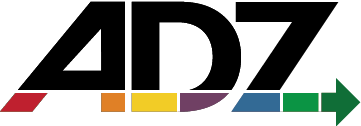Enterprise Timeline in Months
The Enterprise Holon refers to a company that has grown so large - usually by a combination of internal growth, mergers, and acquisitions - that it has multiple Lines of Business, Product Families, and Technology Platforms. Companies of this size frequently struggle with maintaining alignment across all of their teams and organizations, and are susceptible to falling into a siloed structure. This is a challenge we see across the industry, particularly in larger enterprises. Information does not flow freely from silo to silo, planning cadences are often not aligned, and each silo looks to optimize for their needs as opposed to optimizing for the whole enterprise. Breaking the silos is the most important and also the most challenging endeavor an enterprise can take. This involves reorganizing around the flow of customer centric value necessitating the dissolution of some organizations, and the removal and reinvention of many roles.
- Values & Goals
- Clear Enterprise vision
- Accountability to my team
- Agile mindset
- Willing to learn & grow
- Flexibility
- Committed to vision
- Attention to results
- Customer focused
- Adaptable
- Accountable, responsible
- Environmental Responsibility
- Product & Impact
- Enterprise purpose
- 3 Year OKRs
- Rolling 3 year roadmap
- Market feedback loops
- Market Share growth plans
- Enterprise dashboard
- Executive working agreement
- Share price
- Profitability
- Leadership & Culture
- Enterprise Values & Culture
- Shared vision/goals
- Market Perception
- Trust, transparency & safety
- Servant leadership culture
- Conscious Leadership culture
- Continuous improvement culture
- Listen to all perspectives
- Clear communication of goals
- Top to bottom and back collaboration
- Development of future leaders
- Accountable to the board
- Shareholder perception
- Portfolio health & collaboration
- Executive coaching/mentorship
- Sense & Response culture
- Markets & Environment
- Portfolio health
- Roles & Responsibilities
- Effective Lean processes
- Enterprise Organizational architecture
- Collaboration space
- Collaboration tools
- Unified Enterprise process
- Enterprise Lean budgeting
- Enterprise structure
- Aligned incentive structure
- Global Legal, Compliance & Regulatory
- Acquisition/Divestiture opportunities
- Environmental and Humanitarian Impact
Long Term Planning (3+ Years)
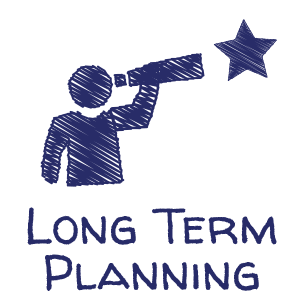 This is an opportunity for executive officers and the board to reflect on all internal and external feedback and to establish or revise the long term objectives necessary to maintain competitive advantage and the overall health of the enterprise. Examples of feedback include changing technology and market conditions, product/portfolio performance against projections, employee surveys focused on enterprise culture, and the health and performance of the executive team.
This is an opportunity for executive officers and the board to reflect on all internal and external feedback and to establish or revise the long term objectives necessary to maintain competitive advantage and the overall health of the enterprise. Examples of feedback include changing technology and market conditions, product/portfolio performance against projections, employee surveys focused on enterprise culture, and the health and performance of the executive team.
- Values & Goals
- Long range vision (3+ years)
- Enterprise Purpose/Vision
- Innovation mindset
- Willing to take risks
- Continuous improvement & learning
- Product & Impact
- Define 3 year OKRs
- Rolling 3 year roadmap
- Leadership & Culture
- Aligned to portfolio vision & objectives
- Meaningful to the product team
- Product & tech perspectives
- Coordination
- Trust & safety
- Ask for help
- Accountable & responsible
- Connected with the customer
- Markets & Environment
- Performance ranges
- Market conditions
- External & Internal competitive analysis
- Marketing strategy
- Sales strategy
- Legal & Compliance
- Architectural/Systemic needs
- Dependency mitigation
- Improve refinement practice plan
- Establish training where necessary
- Explore possible need for technical uplift
- Impediment resolution
Enterprise Annual Planning
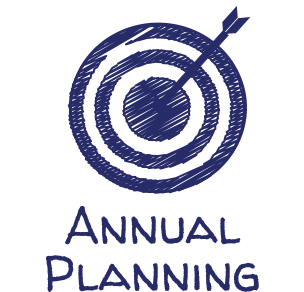 This session defines the enterprise strategy for the year - what is the impact we want to have on the world, and how can we continue to evolve our culture as a business? Similar to the Long Term Planning session, feedback is received from all directions and combined to create a cohesive strategy for the year. Following this session, the #1 priority is to ensure each portfolio area is aware of and aligned to the refined enterprise strategy.
This session defines the enterprise strategy for the year - what is the impact we want to have on the world, and how can we continue to evolve our culture as a business? Similar to the Long Term Planning session, feedback is received from all directions and combined to create a cohesive strategy for the year. Following this session, the #1 priority is to ensure each portfolio area is aware of and aligned to the refined enterprise strategy.
- Values & Goals
- Long Term vision (3+ years)
- Annual Vision
- Enterprise Purpose/Vision
- Innovation mindset
- Willing to take risks
- Continuous improvement
- Product & Impact
- Opportunity identification
- Refine 3year OKRs
- Define 1year OKRs
- Pro Forma Income statement (P&L)
- Rolling 1 year roadmap
- Product approval/EOL
- Prioritization
- Enterprise Kanban Board
- Customer Journeys & Experience
- Consent Order
- Leadership & Culture
- Portfolio Context & Alignment
- Assess Enterprise culture
- Leader development
- Feedback from employees
- Open channels of communication
- Top to bottom alignment of purpose/vision
- Board approval
- Contractual Agreements
- Customer relationships
- Sense & Response culture
- Celebration of successes
- Markets & Environment
- Acquisition/Divestiture realization
- Enterprise investment/allocation
- Update value stream maps
- Hiring/talent management
- Systems/equipment/real estate procurement/dissolution
- Understand market conditions
- Target markets
- Distribution strategy/scorecard
- Enterprise Technology Business Management Strategy
- Enterprise Organizational architecture
- Global Legal, Compliance & Regulatory
Enterprise Retrospective (Twice a year)
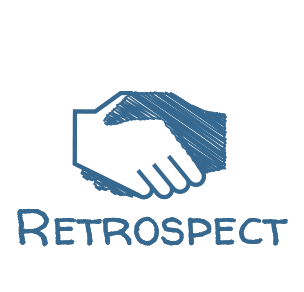 The Enterprise Retrospective maintains the health of the executive team and its relationship with the board, while promoting a thriving culture based on innovation and strong values. Typically semi-annual, its cadence is driven by the length of the enterprise feedback loop needed to gather sufficient, actionable feedback in the particular organization.
The Enterprise Retrospective maintains the health of the executive team and its relationship with the board, while promoting a thriving culture based on innovation and strong values. Typically semi-annual, its cadence is driven by the length of the enterprise feedback loop needed to gather sufficient, actionable feedback in the particular organization.
- Values & Goals
- How do I feel about our direction?
- Individual accountability
- What can I do differently?
- Am I aligned to the vision?
- Open, humble mindset
- Value/impact focus
- Product & Impact
- What's going well?
- What's not going well?
- How are we tracking towards outcomes?
- Measurement of action item impact
- Leadership & Culture
- Ask for help
- How can we improve?
- Open and honest intent
- How are we operating as a team?
- How are we perceived as leaders?
- Perception of Wall Street (if public)
- Perception of our customers/public
- Celebration of successes
- Markets & Environment
- Growth Item backlog
- Organizational needs
Enterprise Process Governance (Once a month)
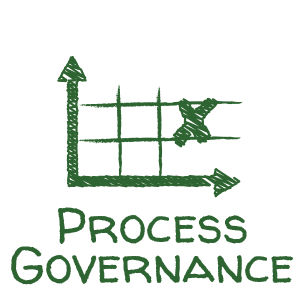 Choosing the ideal processes and tools enterprise wide often involves years of trial, error and adaptation. Striking the right balance between guard rails, flexibility, ease of collaboration, and metric based data integrity (as well as which metrics to follow!) requires continually engaging with teams to hear their pain points with existing processes and tools, mining that feedback to create the next Minimal Viable Change and measuring its impact.
Choosing the ideal processes and tools enterprise wide often involves years of trial, error and adaptation. Striking the right balance between guard rails, flexibility, ease of collaboration, and metric based data integrity (as well as which metrics to follow!) requires continually engaging with teams to hear their pain points with existing processes and tools, mining that feedback to create the next Minimal Viable Change and measuring its impact.
- Values & Goals
- Process objective
- Alignment to Vision/Future Search
- Subject matter expertise
- Focus on simplicity
- Focus on value add
- MVC
- Systems thinking (avoid silos)
- Focus on enabling flow
- Product & Impact
- All collaboration tooling
- Training sessions
- Test/Pilot new processes
- Work progress metrics
- Team health/productivity metrics
- Score cards
- Leadership & Culture
- Consult, coach, train & mentor
- Understand company cultural goals & values
- Support team success
- Continuous improvement
- Take and respond to feedback
- Help create affinity & transparency enabling collaboration across LoBs
- Empowerment
- Celebration of successes
- Free sharing of knowledge (succession plans)
- Markets & Environment
- Establish processes & systems
- Establish best practices, guard rails & playbooks
- Deploy process experts (coach)
- Make impediments & dependencies easier to navigate
- Allow for flexibility in the process
- Map & design development value streams to enable flow
- Process design follows needs
- Enable Quality
- MVC change plans
Enterprise Systems Governance (Once a month)
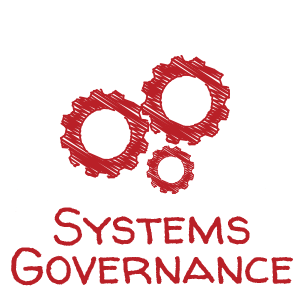 Whether your enterprise is relatively new, built on modern technology, or its over a century old, balancing innovation with stability while enabling future business capabilities is an ongoing game of trade-offs. Enterprise Systems governance ensures that systems evolve in response to feedback from the portfolios and emerging technology while continuing to align with the long term architectural vision.
Whether your enterprise is relatively new, built on modern technology, or its over a century old, balancing innovation with stability while enabling future business capabilities is an ongoing game of trade-offs. Enterprise Systems governance ensures that systems evolve in response to feedback from the portfolios and emerging technology while continuing to align with the long term architectural vision.
- Values & Goals
- Alignment to Vision/Future Search
- Subject matter expertise
- Focus on simplicity
- Focus on value add
- Customer centricity
- Systems thinking
- Lean mindset
- Product & Impact
- Catalogue of Enterprise Architectural Technology
- Architectural runway
- Systems training
- Pilot new ideas (POC)
- Reporting (outcomes)
- Reporting (systems)
- Leadership & Culture
- Consult, coach, train & mentor
- Understand company cultural goals & values
- Support team success
- Continuous improvement
- Take and respond to feedback
- Free sharing of knowledge (succession plans)
- Celebration of successes
- Systems thinking (avoid silos)
- Markets & Environment
- Reference architectures
- System procurement/dissolution & disaster recovery
- Establish guard rails
- Allow for flexibility in design
- Implement development value stream improvements to enable flow
- Deploy system experts (coach)
- Central document repository & SORs
- Design follows needs
- Meet vulnerability guidelines with appropriate robustness & performance
- Integration of industry standards & future innovations
Enterprise Business Strategy (Twice a year)
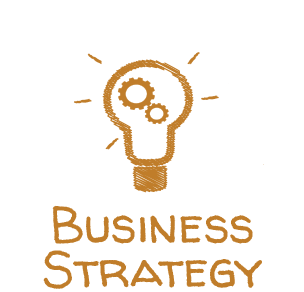 The highest level of pure Business Agility, this session focuses on experimentation, creativity, deep relationships with the customer base, and an innovation mindset. This is a pure brainstorming session that takes in feedback on market conditions, customer needs, internal capabilities, challenges and opportunities and generates possibilities to excite and delight. The frequency may vary depending on the length of the enterprise feedback loop needed to gather sufficient, actionable feedback in each organization but the ideal is to create a "tick, tock" cadence where a strategy is established and refined semiannually.
The highest level of pure Business Agility, this session focuses on experimentation, creativity, deep relationships with the customer base, and an innovation mindset. This is a pure brainstorming session that takes in feedback on market conditions, customer needs, internal capabilities, challenges and opportunities and generates possibilities to excite and delight. The frequency may vary depending on the length of the enterprise feedback loop needed to gather sufficient, actionable feedback in each organization but the ideal is to create a "tick, tock" cadence where a strategy is established and refined semiannually.
- Values & Goals
- Alignment to Vision
- Subject matter expertise
- Focus on value add
- Customer centricity
- Systems thinking
- Lean mindset
- Moral & ethical mindset
- Product & Impact
- Stock price
- Product performance & NPS
- Leadership & Culture
- Customer relationships & behavior
- Strategic relationships
- Brand perception
- Political relationships
- Wall Street Perception
- Competitive relationships
- Markets & Environment
- Market Analysis (opportunities & threats)
- Fiscal analysis & goals
- Customer base analysis (demographics)
- PR/Advertising plans
- Product families
- Enterprise capabilities
- Environmental & Humanitarian impact
- Advertising & marketing plans
- R&D
Enterprise Coordination
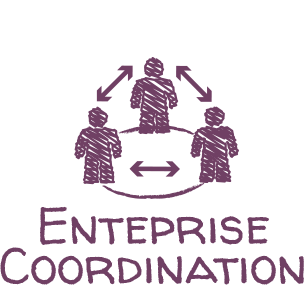 The main purpose of this session is responding to change. Open channels of communication from top to bottom and back are essential so that leaders can respond to accurate, timely information. Creating and nurturing a culture of safety and transparency is paramount to getting accurate feedback and maintaining alignment across the enterprise.
The main purpose of this session is responding to change. Open channels of communication from top to bottom and back are essential so that leaders can respond to accurate, timely information. Creating and nurturing a culture of safety and transparency is paramount to getting accurate feedback and maintaining alignment across the enterprise.
- Values & Goals
- Vision for the quarter
- Aligned to purpose
- Innovation mindset
- Willing to take risks
- Continuous improvement
- Product & Impact
- Quarterly OKRs
- Benefits realization (QBR)
- Feedback loops
- Update roadmaps
- Update Customer Journey
- Updated prioritization
- Leadership & Culture
- Maintain or improve enterprise culture
- Leader development
- Feedback from employees
- Open channels of communication
- Top to bottom alignment of purpose/vision
- Customer relationships
- Sense & Response culture
- Celebration of successes
- Markets & Environment
- Enterprise Investment
- Hiring/talent management
- Systems/equipment/real estate procurement/dissolution
- Understand market conditions
- Target markets
- Distribution strategy/scorecard
- Enterprise Technology Business Management Strategy
- Enterprise Organizational architecture
- Global Legal, Compliance & Regulatory
- Adjust Reorganization Plans



